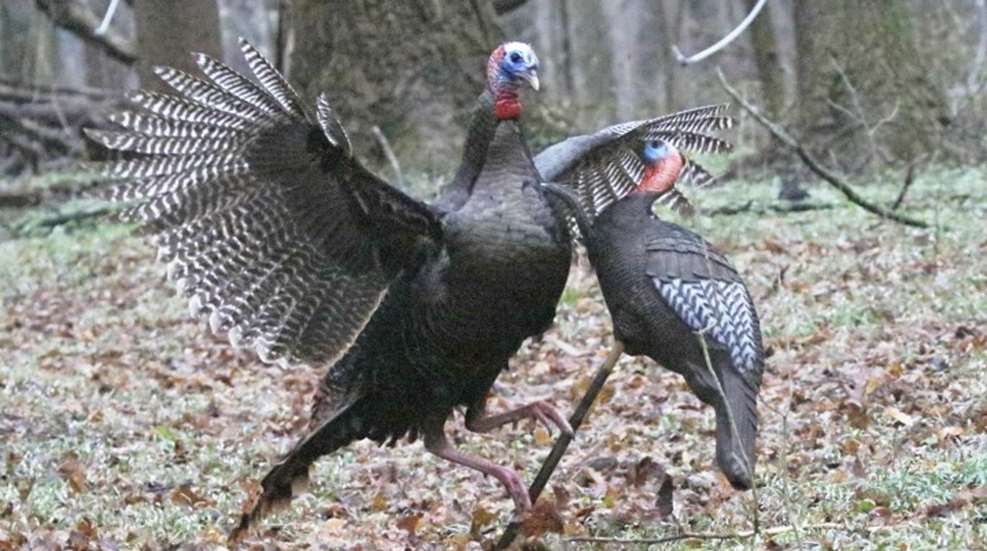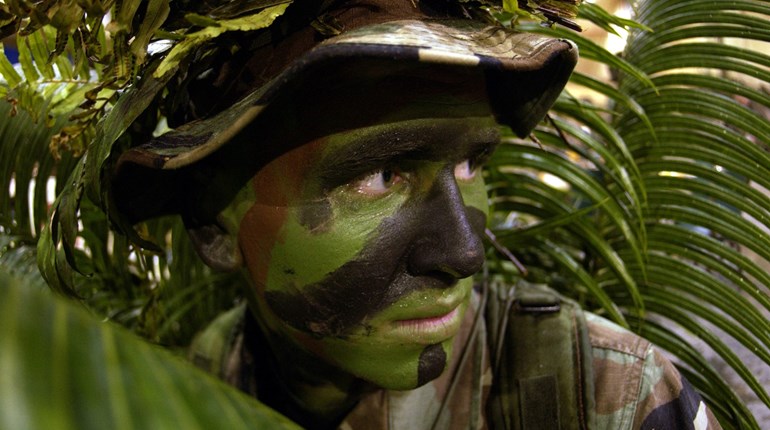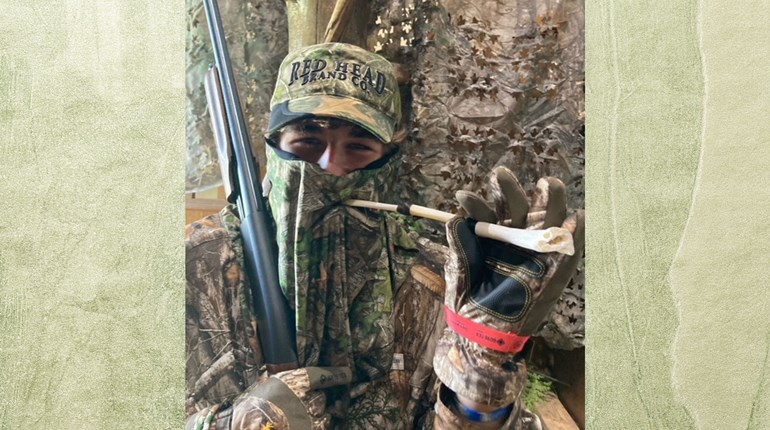
Wild turkey hunting seasons will be opening across North America during the next couple months, but I usually start a month or two earlier. No, I won’t be poaching! Rather, I hunt turkeys with a camera. Early spring is an ideal time for action wildlife photography, as toms are gobbling, battling and strutting, their tails fanned and wingtips dragging the ground.
Hen turkeys appear bored by it all—"been there, done that" seems to be their attitude—but every year I find all the frantic activity extremely exciting, and just have to get out into the woods to see and photograph the spring spectacle yet again.
If you’re relatively new to wildlife photography, and would like to try photographing wild turkeys, keep in mind that you will be chasing one of the most sharp-eyed, wary, will-o'-the-wisp birds in all of nature. Unless, that is, you know where to photograph wild turkeys. Then, wildlife photography doesn’t get much easier.
The dirty little secret of wild turkey photography—as it is with attempting to take photos of most other game animals—is to not photograph the birds where they are regularly hunted. In those areas, wild turkeys have been conditioned for generations that humans mean danger and must be avoided. The other side of the coin is that where game birds and game animals are not hunted, they have little or no fear of humans, often allowing photographers to get quite close.
I stumbled across just such a magical place several years ago in Great Smoky Mountains National Park, lying along the border of eastern Tennessee and western North Carolina. Cade’s Cove is a popular 11-mile loop drive ideal for wildlife watchers and photographers. The wild turkeys, whitetail deer, black bears and other wildlife in the cove have not been legally hunted since the park was chartered in 1934. Consequently, many of the wild critters living there aren't very spooked by humans.
One of the best wild-turkey photo sessions I ever experienced was following a flock through the woods of Cade’s Cove on foot for several hours. It was spring, and the birds were doing everything wild turkeys naturally do this time of year. And I was privileged to photograph it all—at times standing no more than 20 to 30 yards away. The birds knew I was there, but they simply didn’t care (as long as I kept my distance, of course).
America has many such special areas: national parks, national wildlife refuges, state and county parks, metro parks, nature centers, the list is endless. Even some city suburbs and small towns have turkey flocks living within them that are ideal for photography, again, because no hunting is allowed.
As for equipment, I use a Canon DSLR (digital single-lens reflex) camera. My favorite lens to attach to that body for turkey/wildlife photography is a Canon mid-length telephoto zoom lens of 100 to 400mm. For a little extra reach, I’ll often place a 1.4x teleconverter between the camera body and the lens. That combination of equipment gives me a total of 560mm, yet still allows the camera to be handheld, meaning no tripod is required.
But you don’t need expensive, professional-quality photography equipment to take good wild turkey photos. The birds are a relatively large-sized photo subject, so a digital point-and-shoot camera will get the job done, as will many late-model cell phones.
Even though I often travel to take wildlife photos, I still enjoy shooting at least some of my annual spring turkey photos near my home in the area I’ll be hunting in just a few short weeks. Setting up a small, popup blind in good turkey habitat, I put out a plastic turkey decoy I’ve named One-Eyed Jake, start calling, and wait for the birds to arrive.
Jake began life as a hen, but I had a taxidermy friend transform the decoy into a jake by painting his head red. Jake became one-eyed thanks to a mature gobbler years ago, who not only knocked him down, but them stood over Jake and pecked out one of his glass eyes. I never bothered replacing the eye and it hasn’t seemed to matter; many other gobblers have since been attracted to Jake with no problem.
Gobblers just can’t seem to resist attacking a jake decoy to prove their dominance, making for some great action photo opportunities during the ensuing battles. For instance, the photo accompanying this story was taken just last spring.
Turkey photography has taught me at least one lesson that I have been able to apply to turkey hunting. When a gobbler comes into a decoy, many hunters shoot too quickly, often missing the shot because the bird, and particularly its relatively small head, is moving.
After watching numerous turkeys attack decoys, what I eventually discovered was that after the tom knocks the decoy over, believing he has conquered his foe, he will then go into full strut, stand around and gobble. It’s then, when he turns his fan away from you, that you can get your gun up without the bird seeing you. When he turns back around to face you, aim at the base of the bird’s neck and take the shot. The bird’s head will be still at those moments, and your chances of making a killing shot are greatly improved.
In addition to wildlife photography, there’s another reason I like to get into the turkey woods early each spring. During recent years, I’ve been teaching two of my grandsons to turkey hunt. Meaning that I do all the pre-season work—scouting, setting up blinds, etc.—so that when a big gobbler finally comes strutting within shotgun range, one of the boys pulls the trigger, not me. The turkeys are then cleaned and put into the freezer, to be enjoyed at Thanksgiving and Christmas dinners.
Those annual hunts have quickly become a family tradition--three-day spring weekends in the woods that we now refer to as Turkey Camp. The boys and I and their dad (my younger son), look forward to the time together each year. That said, what outdoor memories are you making with your kids/grandkids? No children in your life at the moment? How about mentoring that young person in the neighborhood who’s showing an interest in the outdoors? Just a thought…






































